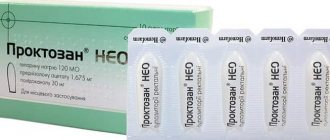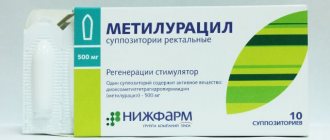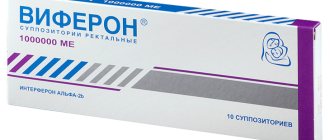Normal bowel movements are an indicator of health. Experts call stool retention for two or more days constipation or constipation. Frequent stressful situations, insufficient fluid intake, a sedentary lifestyle, taking certain medications - all this and much more can trigger the development of a pathological process.
In children, the causes may be related to intestinal immaturity, as well as the introduction of new foods to the diet. And sometimes the whole reason lies in nervous disorders from shocks, for example, separation from the mother. In a healthy person, the frequency of bowel movements depends on nutrition, lifestyle and existing habits.
Those who suffer from constipation often complain of a constant feeling of nausea, fatigue, bad taste in the mouth, decreased appetite, and bloating. Stool retention threatens the development of vitamin deficiency and anemia. This is due to poor absorption of nutrients due to constant use of laxatives.
Normal digestion is the result of a healthy diet, adequate fluid intake and a healthy lifestyle. But when constipation has already occurred, first the intestines should be helped to empty, and only then proceed to preventive measures.
Glycerin suppositories for constipation act quickly and effectively; they are approved for use at any age, from infants to the elderly. Despite the fact that suppositories do help with constipation, using them as self-medication is unacceptable.
Prescription of drugs is carried out by a qualified doctor. Before use, it is important to read the instructions and follow their instructions. So, how do glycerin suppositories work? Can they be used by pregnant women? These and many other questions will be answered in this article.
Instructions for use
Suppositories with glycerin are a laxative for topical use. Unlike medications for constipation, which are used orally, these suppositories act much faster. This is not only a highly effective, but also a safe remedy, since it acts directly in the problem area without spreading throughout the body.
The drug is a transparent soft suppository, which is sold at the pharmacy in ten pieces. The dosage is different for adults and children. The active component of the drug is glycerol. The active component softens fecal stones and stimulates peristalsis by irritating receptors in the intestinal mucosa.
How much do candles cost? Suppositories with an adult dosage can be purchased for 150–180 rubles. Children's suppositories are a little cheaper; the drug can be found for 120–150 rubles. The effect of glycerin is due to its ability to irritate the rectal mucosa, resulting in reflex stimulation of peristalsis.
If the stool becomes very hard, glycerin suppositories may not be effective. In this case, they can even cause harm, since dense feces can injure the mucous membrane of the anus.
Precautionary measures
A glycerin suppository is contraindicated for infants in the following cases:
- When pain is observed in various parts of the abdomen.
- When a child begins to cry and scream when a suppository is inserted into the anus.
- If you are prone to allergic reactions.
- For serious diseases of the digestive system.
- For intestinal obstruction.
- The pointed form of hemorrhoids is a serious contraindication for the administration of glycerin suppositories. In this case, suppositories based on sea buckthorn are prescribed, which stop the inflammatory process of the colon mucosa.
https://youtu.be/bdutsE8Fqnk
How to use?
Suppositories should be stored in the refrigerator. Take them out a few minutes before using to allow them to come to room temperature. The instructions say that you should light a candle after breakfast, although if necessary, this can be done at any time of the day. The main thing is that you have the opportunity to go to the toilet later. The effect usually occurs within ten to twenty minutes.
The urge to defecate may also occur over the next few hours. For prolonged constipation, the use of two suppositories may be necessary. Also, the dosage may increase if the candle is used by a person with large weight. For newborns, the suppository is divided into two or even four parts.
Directions for use and doses
Glycerin suppositories for constipation are prescribed to children for mild forms of constipation, when diet, physical activity and drinking regimen do not allow restoring a stable bowel movement. It is recommended for children to choose a child's form or divide an adult candle into two or three parts, depending on the age and weight of the child.
To get the maximum benefit from treatment, we adhere to the following recommendations when using glycerin suppositories:
- First you need to choose the optimal dose. From the first days of life, babies can be given no more than one third of the suppository. Older children are allowed half a suppository. That is why it is better to contact a pediatrician, who will select the optimal dose that cannot harm the baby.
- Before unpacking the suppository, be sure to wash your hands thoroughly to avoid infection in the intestines.
- Glycerin suppositories are kept in the refrigerator, so it is recommended to warm them up a little in your hands before inserting.
- We place the baby on his side on a flat surface and bend his knees.
- The tip of the candle can be lubricated with glycerin for gentle insertion.
- We lift the upper buttock and carefully insert the candle into the anus to a depth of no more than 1 cm in babies of the first year of life.
- We squeeze the buttocks and fix the baby’s position for a few minutes so that the glycerin has time to dissolve and soften the hard feces in the large intestine.
- How long does it take for the drug to work? The first positive result occurs within 15 minutes after administration of the suppository. In this case, bowel movement occurs within an hour.
Contraindications and side effects
There are restrictions in connection with the use of suppositories, these include:
- proctitis – inflammation of the rectum;
- neoplasms in the intestines;
- anal fissures;
- hypersensitivity to glycerol;
- acute hemorrhoids.
No side effects were observed with single use. Long-term and regular use is associated with the risk of the following unpleasant symptoms: irritation, burning sensation, and the intestines refuse to work on their own.
Constipation in pregnant women
Constipation in pregnant women is common and is explained by the early production of progesterone, a hormone that relaxes the muscles of the internal organs. This serves as a warning against uterine hypertonicity and premature birth. But a side effect of progesterone is a weakening of intestinal motility.
In later stages, constipation is due to the fact that the growing uterus puts pressure on the internal organs and causes disruption of their functioning. The answer to the question of whether it is possible to use suppositories during pregnancy can be answered unequivocally - yes! The period of bearing a child is not a contraindication to the use of glycerin suppositories. During a normal pregnancy, doctors may prescribe one suppository in the morning.
Caution never hurts, especially during pregnancy. Do not forget that active stimulation of intestinal contractions can cause premature birth. However, you should use suppositories with great caution in the early stages, when vital organs and systems are developing, or it is better to abandon them altogether. In exceptional cases, pregnant women are prescribed a children's dosage.
Indications for use during pregnancy
When are Glycelax glycerin suppositories recommended for pregnant women? The doctor prescribes them:
- for constipation of various etiologies - due to poor nutrition, enlargement of the uterus and its pressure on the intestines;
- before childbirth for gentle bowel cleansing;
- for local softening of the skin and elimination of irritation (this is possible due to the softening effect of glycerol).
Is it possible to use suppositories after childbirth during lactation? Use is permitted, but only on the recommendation of a doctor.
Analogs
Let's consider popular analogues of glycerin suppositories:
- Glycelax. Helps resolve isolated cases of constipation. The drug has an irritating effect on the rectal mucosa, causing a reflex activation of peristalsis. Glicex contains glycerol, which provides a laxative effect. The drug also acts like an ointment, moisturizing the sphincter area. This helps prevent pain during bowel movements.
- Glycerol. The active component of the drug, as in the previous case, is glycerol. The product has not only a laxative, but also a dermatoprotective and dehydrating effect. Doctors usually prescribe two suppositories twenty minutes after breakfast. Treatment is stopped after intestinal function has returned to normal.
- Microlax. Used to combat constipation in newborns. Microlax is used in the form of microenemas. This is a combination product that contains three active ingredients. Sodium citrate is necessary to dissolve hardened stool. Sodium lauryl sulfoacetate is a coating agent that prevents caking. Sorbitol enhances the therapeutic effect of the first two substances and facilitates the evacuation of feces.
- Duphalac. This is a lactulose-based laxative. Duphalac eliminates constipation by stimulating peristalsis and influencing the consistency of stool. Among other things, Duphalac is also a probiotic that stimulates the production of beneficial bacteria in the intestines and suppresses the growth of pathogenic microflora. The drug is used internally. The syrup can be consumed undiluted or diluted with water. Use the product once a day, preferably at the same time.
- Portalak. This is another lactulose-based laxative. Portalac normalizes the consistency of stool and promotes its rapid elimination. It is taken orally with food or immediately after breakfast. Portalac is prescribed even to children under one year old. Along with this, patients should drink plenty of natural water.
When is a glycerin enema indicated for constipation?
In some cases of treating constipation, the patient is prescribed an enema with a glycerin-based solution. This cleansing of the intestines not only guarantees the complete exit of feces, but also prevents ruptures of the anus and hemorrhoids.
A glycerin enema for constipation ensures the direct breakdown of accumulated feces and the flushing out of toxins that often accumulate during prolonged bowel retention. It is recommended to carry out this procedure for constipation accompanied by:
- bloating and colic;
- nausea and skin rashes;
- signs of intoxication such as fever and loss of appetite;
- pain in the right hypochondrium.
A glycerin enema is indicated for constipation for more than 4–5 days with a complete absence of bowel movements. It is also used for postpartum and postoperative types of constipation. Often, glycerin is added to the enema solution before surgery.
Despite the effectiveness of this intestinal cleansing, an enema has many contraindications: pregnancy, diabetes, colitis, high body temperature, intestinal tumors, etc. Therefore, you should resort to this type of therapy only after consulting a specialist.
Reviews
Most people note a good effect from Glycerin. They note that the laxative effect occurs within ten minutes. Still, as many people as there are, so many opinions. Some speak disapprovingly of the need to hold the suppository in the rectum. They claim that this is very difficult to do, which is why the suppository comes out before practically anything has been done.
So, glycerin suppositories are an effective drug against constipation. Glycerol has a gentle effect on the intestinal mucosa, providing a reflex enhancement of peristalsis. Suppositories act directly in the rectum and are not absorbed into the blood. The drug is prescribed to newborns, pregnant women and even the elderly; there are no age restrictions.
You should not use suppositories as self-medication. It is important to determine the cause of constipation, as well as normalize your diet and lifestyle. Glycerin suppositories are not used long-term and regularly; they are more of an emergency drug. Follow the recommendations in the instructions and make sure there are no contraindications before treatment.
| Rating 4.2 / 5 |
| Efficiency |
| Price quality |
| Side effects |
Glycerin suppositories : 2 reviews from doctors, 21 reviews from patients, instructions for use, analogues, infographics, 1 release form.
Benefits of use
Suppositories with glycerin for newborns are a very popular remedy against constipation, as they have many advantages:
- they can be used at a very early age, when other laxatives are still contraindicated;
- as a rule, they give a fairly quick effect;
- do not contain coloring or flavoring substances that can cause allergies;
- they are not absorbed into the mucous membrane of the intestinal walls;
- do not cause rapid addiction;
- are inserted easily, quickly and painlessly;
- the components are harmless to the baby’s body;
- undissolved remains of the suppository come out along with the feces, without remaining in the intestines;
- available at any pharmacy without a prescription and at a low price.
Any remedy is not without its drawbacks. Glycerin-based suppositories can harm a newborn if you start using them at your own discretion, at the wrong time, exceeding the permitted dosage and without consulting a pediatrician.
When using it is necessary to take into account possible side effects of the drug:
- allergic manifestations;
- vomiting and nausea;
- troubles from the gastrointestinal tract.
Additional Information. If suppositories are used for too long, catarrhal proctitis may develop, and their laxative effect will tend to zero.
The main disadvantage is that suppositories only relieve the symptoms of the disease, they allow you to solve the immediate problem, and the causes of constipation will have to be treated together with a pediatrician.
Reviews from doctors about glycerin suppositories
| Rating 3.3/5 |
| Efficiency |
| Price quality |
| Side effects |
Glycerin rectal is used to treat constipation or to cleanse the bowel before a rectal exam or other bowel procedure.
Glycerin suppositories should not be used more than once a day.
Glycerin is used as a laxative. This works by causing the intestines to retain more water, which softens the stool.
| Rating 5.0 / 5 |
| Efficiency |
| Price quality |
| Side effects |
A good drug as a quick-acting laxative in case of constipation and before medical procedures. It is possible to use a children's form - suppositories.
The price is a little expensive, but the quality matches.
Before use, consult a specialist; side effects, itching and an allergic reaction are possible.
Is it possible to use glycerin suppositories for newborns?
Glycerin suppositories for children, according to the manufacturer's instructions, are allowed from the age of three months. Only in emergency cases, when other means do not help, is glycerin prescribed for infants from the first days of life. In addition, the drug is used only to treat constipation. For prevention, it is recommended to use other, safer methods.
Children under three months of age can be administered no more than one third of the suppository. Older children are allowed half or a whole suppository. Only a doctor can select the optimal dose, taking into account the health characteristics of a particular child.
Patient reviews of glycerin suppositories
I bought these candles to sometimes light them for my child. But, unfortunately, our story with candles did not work out. It got to the point of childish hysteria, the child didn’t want me to put these candles on him and squeal that it was tingling there. In general, I had to buy another laxative.
The candles are good. I, like many others, was prescribed it during pregnancy and also had to use it in the first days after giving birth, when my body was a little “stunned” by what had happened. Also, these candles were inserted into the baby in the first months, the tummy was tormented and only they were saved. Naturally, 1/4 of the whole candle was used for it (the effect is immediate in a minute). It is better to cut into long strips, rather than into washers (this makes it easier to insert the baby). I also recommend them, there are no side effects.
Suppositories that work very well as a laxative. I couldn’t overcome the problem of constipation during pregnancy; fortunately, after giving birth, the gynecologist advised me to use these suppositories - my problem was solved. I didn’t find any side effects, you can use them during pregnancy, and always if you experience problems in this area. I recommend to everyone.
Composition and release form of the drug
◊ Rectal suppositories are transparent or translucent, almost colorless or with a yellowish-brown tint, with a spreading surface, hygroscopic, torpedo-shaped; Cloudiness of the suppository, slight softening of the surface layer and sweating of the contour packaging are allowed; An air rod is allowed on the cut.
| 1 sup. | |
| glycerol (based on 100% substance) | 2.11 g |
Excipients: sodium stearate – 0.17 g, purified water – 0.35 g.
5 pieces. – blister contour packages (2) – cardboard packs.











